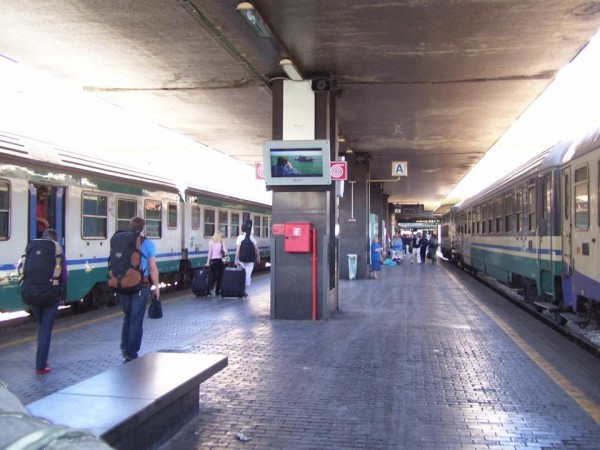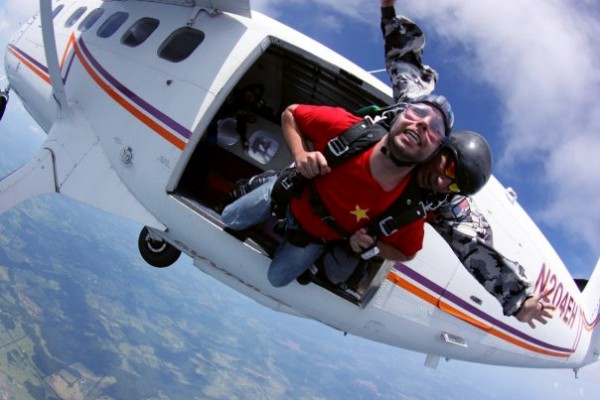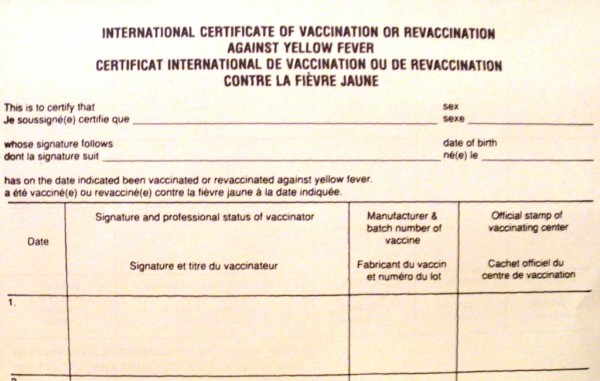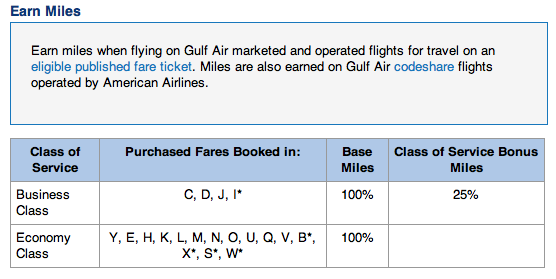
Like many career-breakers, I spent 8 years paying my dues in Corporate America. And while I’m probably one of the few who can truly say that I loved my job, I dreamed of something more. After months of thinking, researching, and intensely detailed planning, I was ready to embark on my new “adventure career,” in pursuit of extended around-the-world travels with a purpose.
Following countless hours of research for my own travels, I compiled this A-B-C list of travel-related websites, specifically geared towards long-term international travel. Whether you plan to go to one country for one week or 20 countries for 6 months, these resources will get you going:
A – ALERTS & Warnings
Smart Traveler Enrollment Program – sign up to receive the latest Travel Warnings and Alerts about the countr(ies) where you will be traveling or living
B – BUS Transportation
Eurolines – Europe
Megabus – the United Kingdom
StrayBus – New Zealand and Asia
C – COUNTRY Information/Facts
Rick Steves – helpful information about transport, city “must-sees”, sample itineraries, accommodation and restaurant recommendations, lots of little maps, and great walking tours.
Let’s Go – world travel guides written entirely by students who roam the globe in search of travel bargains.
D – DISTANCE between 2 cities anywhere in the world
Distance Calculator
E – ELECTRONICS
Computer – Want to be able to access, update, and save all of your computer files, pictures, videos, etc. from any of your computers anywhere in the world without memory chips? Check out Dropbox.
Phones – Don’t want to pay an arm & a leg for calling or texting while traveling? Try Ekit.
Converter/Adapter – Not only are wall outlets different around the globe but some electronic devices may not be compatible with the voltage in other countries. (For example, the USA operates on 110/120V whereas Europe, uses 220V). Get a World Travel Voltage Converter Adapter Kit.
F – FLIGHTS
Meet, Plan, Go! Trip Planner powered by AirTreks – round-the-world tickets.
Kayak – flight search engine.
Sky Scanner – flights with a “flexible destination.”
Ryan Air or Easy Jet – budget inter-Europe flights.
G – “GLOBAL” Credit/Debit cards
Foreign transaction fees and ATM fees can add up quickly, but here are a couple fee-free cards to try:
Capital One – offers a no annual fee, no-foreign transaction fee VISA credit card.
Charles Schwab – offers a debit card with no ATM fees anywhere in the world, linked to a high-interest checking account with no minimum balance or monthly service fees.
*Always remember to notify your credit/debit card company of upcoming travel, or they may put a hold on your card at the least opportune time.
H – HOSTELS & HOTELS
Meet, Plan, Go!/GoMio– book hostels and connect with fellow travelers at the same time.
Hostel Zoo – search site that compares hostel prices/availability from the major hostel booking sites.
Euro Cheapo – search for cheap European hotels.
I – INSURANCE
For expert personal assistance in evaluating your travel insurance needs, check out Meet, Plan, Go!‘s new insurance hotline.
J – JUDGE how well-traveled you are. . .here are some fun quizzes:
The Travel List Challenge – how well traveled are you?
Lufthansa Virtual Pilot – how well do you know European geography?

K – KNOW about Diseases and Vaccinations
Centers for Disease Control – know what vaccinations are necessary and what diseases might exist in your destination
L – LANGUAGE Translators
Google Translate
M – METRIC Converter
Metric Units Converter
N – No-No’s of International Travel
NO expensive jewelry, NO purses over the shoulder—wear a money belt, NO clothes with writing on it, DON’T overpack, DON’T travel on a passport with less than 6 months of validity, DON’T leave belongings unattended on an overnight train or at the beach, DON’T forget to validate your train ticket or rail pass before boarding—the fines are hefty!
O – ORGANIZED-Tour Companies
Intrepid Travel – for adventurous travelers who want to get off the beaten path.
Visit Meet, Plan, Go! Adventures for ideas on choosing your career break adventure.
P – PACKING Lists
For travelers, especially those backpacking.
For camping/hiking.
Q – QUALITY Travel Blogs/Sites
I really enjoy these travel bloggers’ sites because they are full of lots of information and inspiration:
Katie Going Global – on a journey through the former Soviet Union.
Nomadic Matt – “travel better, cheaper, longer.”
Round We Go: A Journey Around the World – “a couple’s journey around the world.”
Women on the Road – “inspiration & advice for women who love to travel solo.”
YTravel Blog – “family travel with young kids.”
R – RESUME
Post Career-break Resume – how to reflect long-term travel on your resume
S – SOCIAL-Networking for Travelers
Faith Travels – a place to network with other Christian travelers, talk about destinations, find a travel partner, etc.
Tripping – a way to connect with locals while traveling, this site matches up travelers with local hosts.
T – TRAIN tickets/schedules
Rail Europe – see fares and buy European train tickets.
European Train Schedule – view all European train schedules & connections.
Budget Europe Travel Service (B.E.T.S.) – personalized service from experts in European rail travel.
U – U.S. GOVERNMENT GUIDE to U.S. Citizens Traveling/Living Abroad
International Travel A-Z Index of Topics
V – VISA requirements
Official Travel Documents – general info & forms for visas, passports, and expediting services.
Visa HQ – quick-check of visa requirements by country.
Passport Visa Express – visa & passport expediting services.
W – WORLD-Trip Travel Guides
Travel Independent – “everything you need to know about independent budget travel”
BootsnAll – “one stop indie travel guide.”
X – XCHANGE Rates
World Currency Converter
Y – YOUR story!
Share your own travel experiences with others! Create your own blog using WordPress or BlogSpot. And don’t forget to share your story with Meet, Plan, Go!
Z – ZERO-cost (or low-cost) Travel
HelpX
International House Sitting
Workaway
WWOOFing
Volunteer
 Sarah Schauer began her career break in June 2012 with a domestic seasonal opportunity before heading to Europe, Africa, South America, and New Zealand. She’s a financial analyst by career, but also plays beach volleyball, volunteers with foreign exchange students, and enjoys hiking & the outdoors. She’s a Christian who feels blessed to be able to experience this adventure of a lifetime participating in international volunteer opportunities, all out of the desire to make a difference in the lives of others and experience cultural immersion. You can follow Sarah during her experiences at her website, Travels With a Purpose.
Sarah Schauer began her career break in June 2012 with a domestic seasonal opportunity before heading to Europe, Africa, South America, and New Zealand. She’s a financial analyst by career, but also plays beach volleyball, volunteers with foreign exchange students, and enjoys hiking & the outdoors. She’s a Christian who feels blessed to be able to experience this adventure of a lifetime participating in international volunteer opportunities, all out of the desire to make a difference in the lives of others and experience cultural immersion. You can follow Sarah during her experiences at her website, Travels With a Purpose.






 If you have student loans or other financial commitments that you need to meet while living abroad; or if you just want to save money for additional extended travel, consider teaching in an Asian or Middle Eastern country, where most English teachers typically make enough to save 30%-50% of their income after expenses. Schools in some of these nations will even provide you with free housing and fund your airfare. In countries like Vietnam or Taiwan, that means saving up to $6,000 after a year of teaching, or in South Korea, you can save $10,000 – $15,000 a year. With those savings, you can fund months of travel virtually anywhere in the world, and you’ll do it while living in the one of the most fascinating regions on the planet.
If you have student loans or other financial commitments that you need to meet while living abroad; or if you just want to save money for additional extended travel, consider teaching in an Asian or Middle Eastern country, where most English teachers typically make enough to save 30%-50% of their income after expenses. Schools in some of these nations will even provide you with free housing and fund your airfare. In countries like Vietnam or Taiwan, that means saving up to $6,000 after a year of teaching, or in South Korea, you can save $10,000 – $15,000 a year. With those savings, you can fund months of travel virtually anywhere in the world, and you’ll do it while living in the one of the most fascinating regions on the planet.









 Sarah Schauer began her career break in June 2012 with a domestic seasonal opportunity before heading to Europe, Africa, South America, and New Zealand. She’s a financial analyst by career, but also plays beach volleyball, volunteers with foreign exchange students, and enjoys hiking & the outdoors. She’s a Christian who feels blessed to be able to experience this adventure of a lifetime participating in international volunteer opportunities, all out of the desire to make a difference in the lives of others and experience cultural immersion. You can follow Sarah during her experiences at her website,
Sarah Schauer began her career break in June 2012 with a domestic seasonal opportunity before heading to Europe, Africa, South America, and New Zealand. She’s a financial analyst by career, but also plays beach volleyball, volunteers with foreign exchange students, and enjoys hiking & the outdoors. She’s a Christian who feels blessed to be able to experience this adventure of a lifetime participating in international volunteer opportunities, all out of the desire to make a difference in the lives of others and experience cultural immersion. You can follow Sarah during her experiences at her website, 

 Mike Shubbuck is one half of the the traveling duo known as
Mike Shubbuck is one half of the the traveling duo known as 

 Travel has always been their hobby, but recently, Mike Watkins and Akiko Kubo decided to “cash-in” on their dreams of taking a career break to travel around the globe after seeing close friends’ and family’s lives end too soon. To avoid wondering what might have been, they are downsizing their comfortable lives into a backpack, and making way for opportunities undiscovered. Follow their 8-month, round-the-world, adventures on
Travel has always been their hobby, but recently, Mike Watkins and Akiko Kubo decided to “cash-in” on their dreams of taking a career break to travel around the globe after seeing close friends’ and family’s lives end too soon. To avoid wondering what might have been, they are downsizing their comfortable lives into a backpack, and making way for opportunities undiscovered. Follow their 8-month, round-the-world, adventures on 











